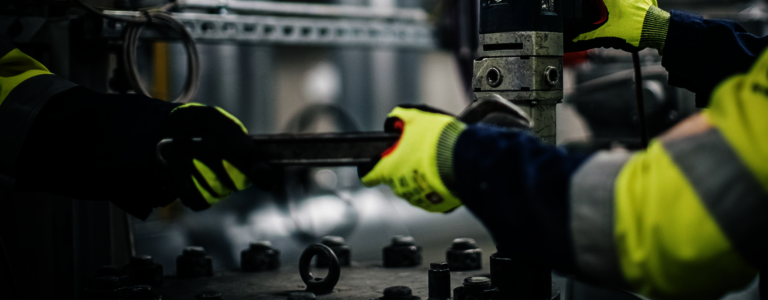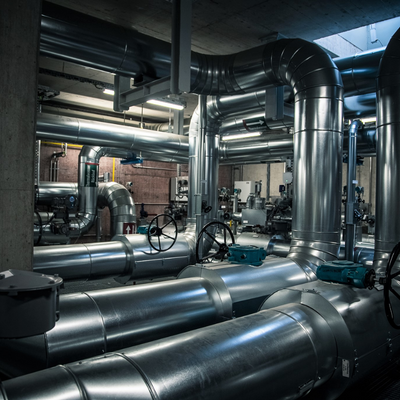- Bilfinger is supporting Stadtwerke München in Europe's largest district cooling project
- Reduction of up to 70% in electricity consumption compared with conventional air-conditioning systems
- District cooling, as a renewable resource, is an important tool in achieving European climate objectives
A comfortable indoor climate during hot summers: district cooling is a resource- and climate-friendly way to achieve this. Stadtwerke München (SWM - Munich municipal utilities) already has a 22-kilometer district cooling network and is consistently expanding the district cooling supply for Munich. From the end of 2023, chilled water is to flow from the South Energy Site in Munich-Sendling through the neighborhoods Isarvorstadt and Ludwigsvorstadt into the city center. The heat available there from geothermal energy and combined heat and power generation will also be used for district cooling. Industrial services provider Bilfinger has been commissioned with the implementation of the demanding pipeline construction work.
In the future, the new district cooling center in Munich will provide air-conditioning for more commercial customers such as hotels, office buildings and retail properties in a sustainable manner. District cooling works in a similar way to district heating: here, too, a pipeline system is used to transport thermal energy to the buildings via heat exchangers. From the South Energy Site in Munich-Sendling, water with temperatures ranging from 6 to 10 degrees Celsius is to be fed into the district cooling network. In the connected buildings, the heat exchangers absorb the energy from the building air-conditioning systems. After that, the heated water flows back to the Energy Site South in a closed circuit, is re-cooled and re-used in the buildings to be climatized.
“District cooling is an innovative and energy-efficient air-conditioning solution and therefore a building block for driving the energy transition and achieving the European energy and climate objectives,” says Thomas Schulz, Group CEO of Bilfinger. “The project for Stadtwerke München has allowed us to establish ourselves as a reliable provider of sustainable industrial services in the continuously growing segment of district cooling.”
The Austrian Bilfinger unit Bilfinger Industrial Services GmbH is responsible for, among other things, the planning and installation of the complex plant equipment for the district cooling project in Munich-Sendling, which includes numerous pumps, fittings and heat exchangers. Around 50 Bilfinger employees are working on site to install and weld a total of 8 km of piping. Moreover, the team will assist the long-standing customer SWM with the commissioning.
When completed, 36 megawatts of cooling energy will be generated at the Energy Site South - the equivalent of about 100 office buildings' cooling requirements. The expansion of the Munich district cooling network makes the new district cooling center the largest in Europe.
Compared to cooling via decentralized, conventional air-conditioning systems, district cooling saves up to 70% of electricity consumption and also reduces CO2 emissions accordingly. Moreover, district cooling is ecological and sustainable when naturally-generated cold temperatures from ground water or rivers can be used. This is the case in Munich-Sendling: the newly built cooling center uses, among other things, the water of the Isarwerk canal to generate the district cooling. Since it is a closed system, there is no direct intervention in the water ecology.
SWM has already relied on Bilfinger Industrial Service’s support to construct a new geothermal plant – the largest in Germany to-date – that supplies around 80,000 Munich residents with environmentally friendly district heating. This system utilizes hot thermal water, with temperatures from 90 to 110 degrees Celsius, from beneath Munich to supply heat. Bilfinger's responsibilities for this geothermal plant, which went into trial operation at the end of 2021, included the piping construction and the installation of the heat exchangers.
“In addition to district heating, district cooling is also an important factor for the CO2-neutral energy supply of our city. The environmental benefits of this innovative cooling system are high: because the cold is generated centrally and the local river acts as a coolant, valuable resources are conserved. The construction requires a high level of technical expertise. In our major projects, we also rely on the support of experienced service providers like Bilfinger,” says Helge-Uve Braun, Technical Managing Director of Stadtwerke München GmbH.
Munich’s new district cooling project will also have numerous positive impacts on city planning. Due to the central supply of district cooling, further cooling units on downtown rooftops will be avoided. In addition, the inner-city microclimate will improve because district cooling, in contrast to decentralized domestic air-conditioning systems, does not emit waste heat into the already heated downtown area. Thus, district cooling helps to counteract the overall warming of Munich and to meet the growing demand for cooling in the city in an environmentally friendly way.




![[Translate to English:]](/fileadmin/_processed_/3/d/csm_News_Pressekontakt_KatharinaSchoenebeck_8cd62e6785.png)